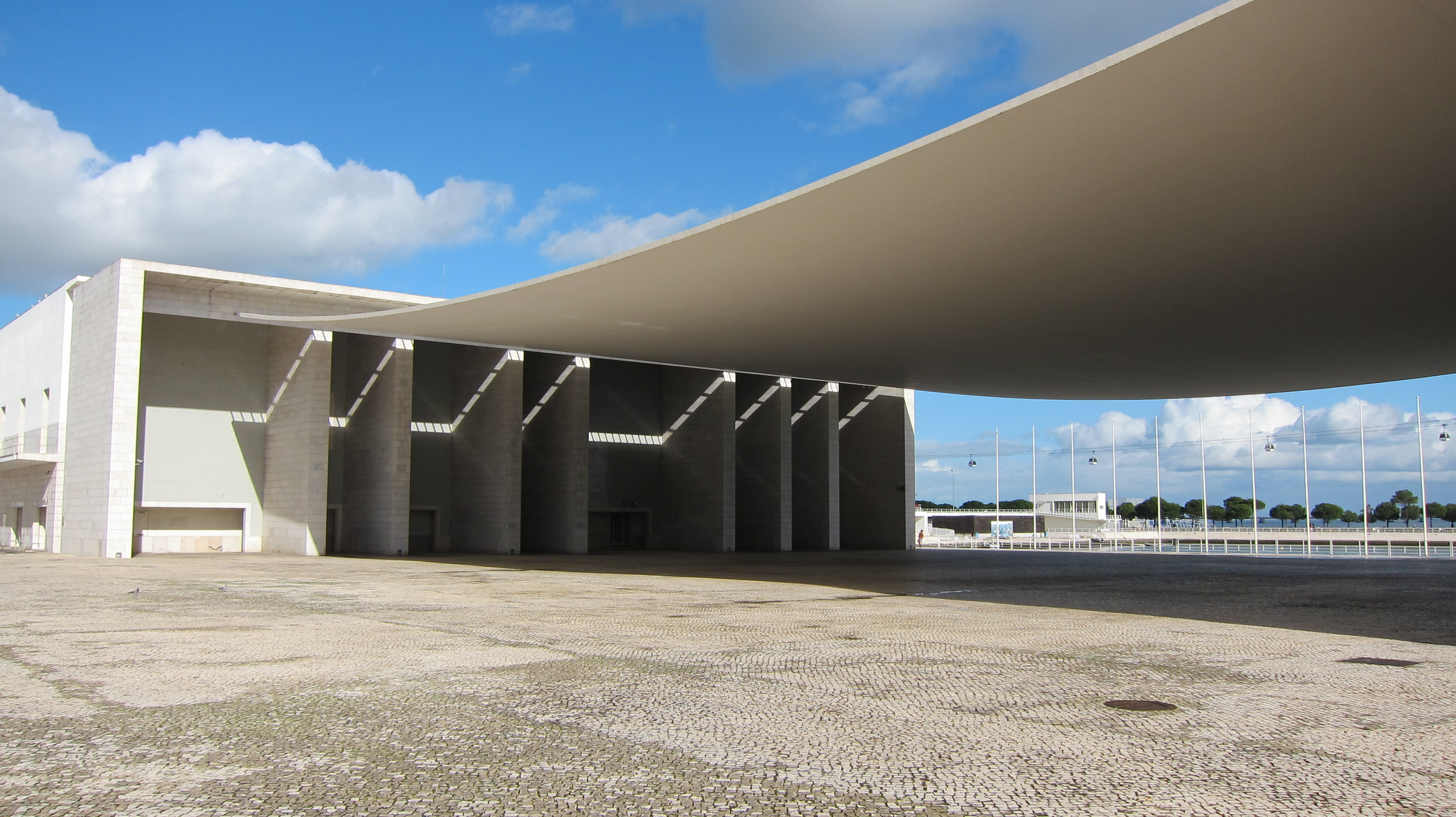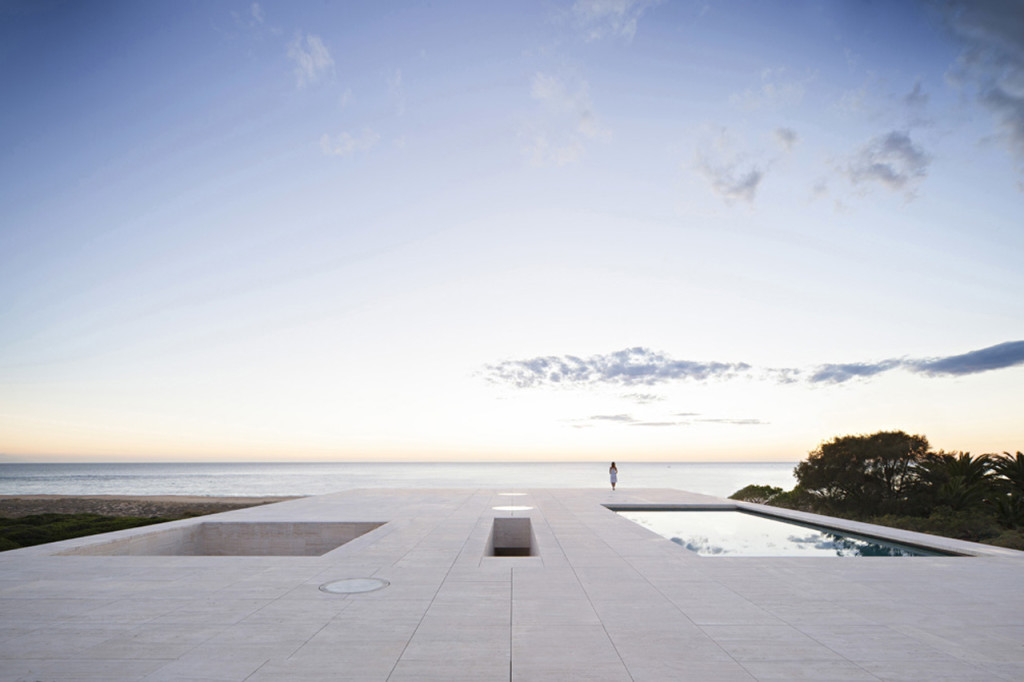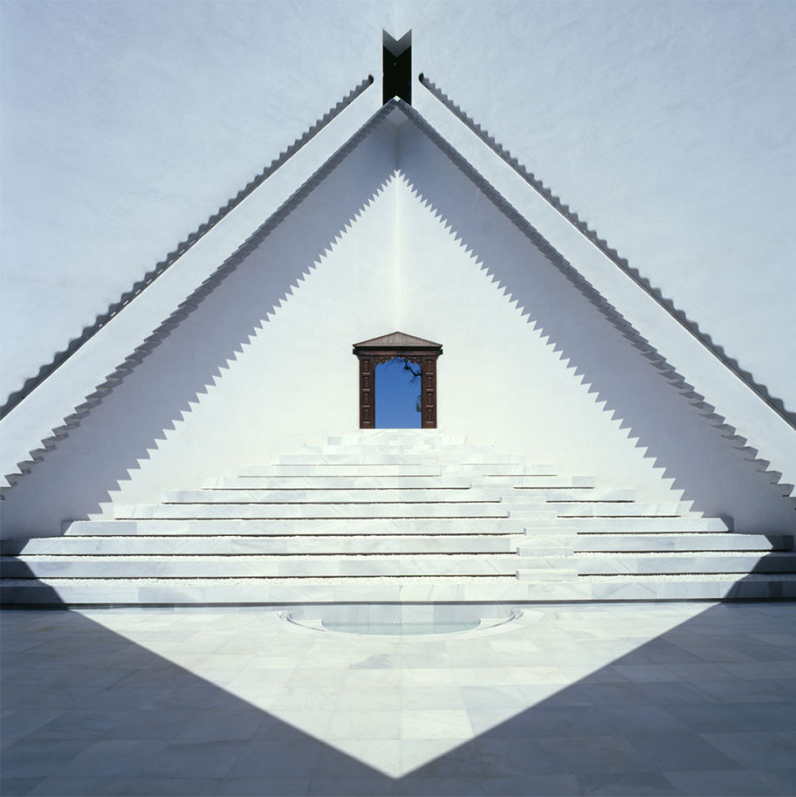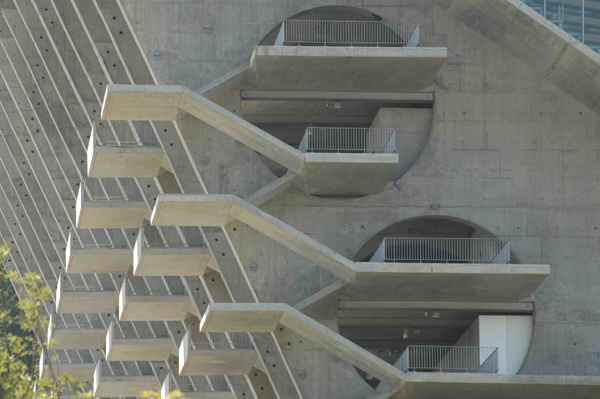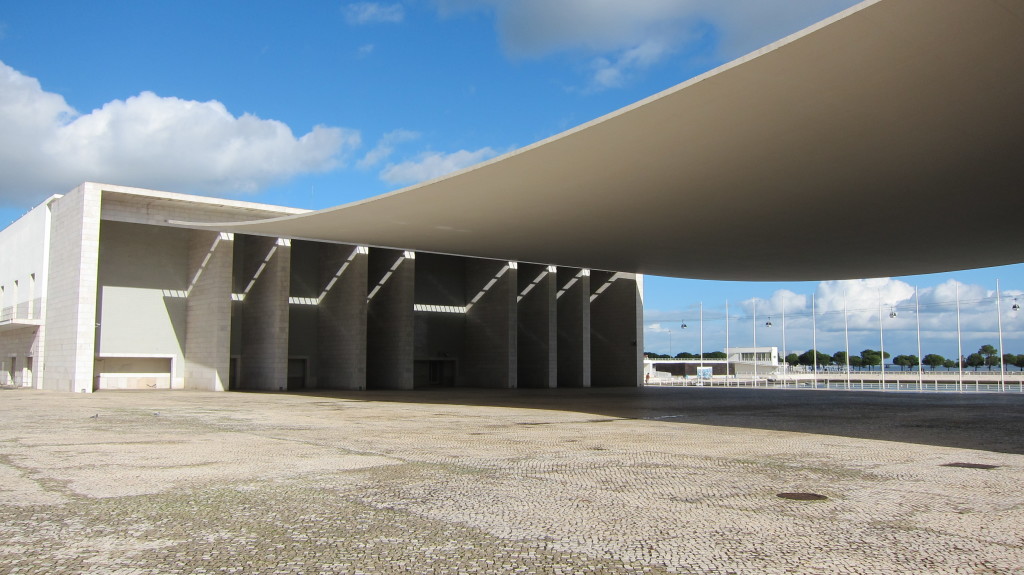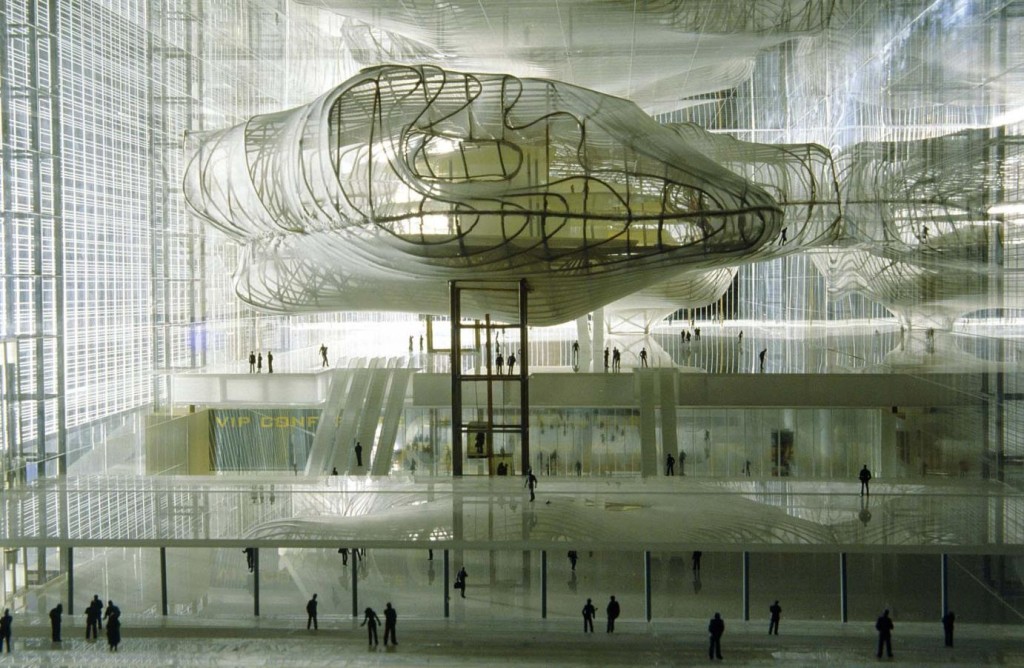Architetture Sospese: ci sono delle architetture che non smettono di parlarci, alcune che sanno tutto di noi. A volte l’Architettura è come una meteora che si schianta nel nostro immaginario e fa viaggiare le nostre emozioni.
Come la meteora, dal Greco Μετέωρα, letteralmente “sospeso in aria”, le Architetture Sospese si innalzano, e non necessariamente nell’aria: essere sospesi è un modo di essere e di esistere che va oltre il semplice concetto fisico.
Non resta che iniziare il viaggio alla scoperta di tutte le sfumature delle Architetture Sospese.
Casa dell’Infinito – Architetture Sospese nell’infinito
Apriamo la nostra indagine con il concetto assoluto dell’essere sospesi: la Casa dell’Infinito. Per questo progetto, Alberto Campo Baeza, si è ispirato a un’acquaforte di Rembrandt del 1655, “Cristo Presentato davanti al Popolo”, dove a dominare lo spazio è il disegno di una linea perfettamente retta ed orizzontale. A partire da questa suggestione nasce la Casa dell’Infinito, che sorge a Cadice come un porto romano sull’Atlantico, lì dove sono passate nei secoli tutte le navi provenienti dal Mediterraneo e dove si perpetua ancora la Storia.
Una Storia omaggiata e reinterpretata come un incessante inseguimento della linea dell’orizzonte, come l’annullamento di quel confine netto che divide uomo, mare e cielo, verso il senso dell’assoluto. “Abbiamo voluto questa casa perché fosse, non solo, lo spazio ideato per fermare il tempo ma perché rimanesse nella mente e nel cuore dell’umanità. La casa dell’infinito”.
Casa del Ritiro Spirituale – Architetture Sospese nei propri pensieri
La Casa del Ritiro Spirituale si staglia nella provincia di Siviglia come una vela in un mare verde, e sembra essere in movimento incessante; un movimento che nasce dalla mente. Progettata nel 1975 dall’Argentino Emilio Ambasz, la casa è stata costruita nel 2004 e da allora è al centro di critiche e soggetta a tentativi di identificazione da parte dei critici: minimalismo, decostruttivismo, essenzialismo.
Ambasz, invece, pare non aver dubbi a riguardo: “La Casa del Ritiro Spirituale è e non è”, semplicemente, senza etichette, senza regole. Quest’opera è sospesa nei pensieri di chi ne fa il percorso ascensionale verso il balcone, uno spazio atemporale tra i due muri ortogonali che definiscono il simulacro e l’identità della casa stessa: un percorso a senso unico, che non porta altrove se non alla pura riflessione.
Casa del club del Braga – Architetture Sospese tra diversi equilibri
Ispirata ai ponti Inca, la Casa del club del Braga progettata da Eduardo Souto De Moura, scolpisce le pendici del Monte Castro con i suoi affascinanti movimenti.
Guadagnatosi il Chicago Athenaeum, il premio di Architettura internazionale per il miglior design globale nel 2006, quest’opera appare delicata e sospesa nonostante la sua brutalità: i piani verticali paralleli e aggettanti, il movimento continuo del corpo distributivo che sembra portare verso percorsi metafisici e l’affascinante equilibrio delle coperture, che entrano in contatto tra loro attraverso cavi d’acciaio fluttuanti in aria. La visione sembra quella di un oggetto in bilico, eppure dietro questo progetto c’è una grande stabilità e matericità dichiarata che riesce tuttavia a dissolversi nella sua poetica.
[irp posts=”4030″ name=”Interior Design Italiano, cinque nomi di spicco”]
Padiglione del Portogallo, EXPO ’98 – Architetture Sospese e basta
Il Padiglione del Portogallo è stato realizzato da Alvaro Siza per l’Expo di Lisbona del ’98. Progettato per non essere un’Architettura temporanea da esposizione, ideato per poter essere riutilizzato, riconfigurato e per durare nel tempo, il Padiglione viene identificato con la sua copertura mozzafiato.
Questo aspetto è la chiave del punto di accesso per l’Expo: il grande telo flesso di cemento, spesso solo 20 cm, non è il coronamento di uno spazio aperto, bensì è la matrice creativa di uno spazio nel vuoto, che diventa così fulcro compositivo, di flussi e di aggregazione. Una forma modellata dalla luce ed onesta, un’opera di straordinaria bellezza e complessità intrinseca. Semplicemente sospesa.
Nuovo Palazzo dei Congressi EUR – Architetture Sospese nel vuoto
E’ lo stato di fatto di molte opere architettoniche incompiute. Emblematica è la Nuvola del Nuovo Palazzo dei Congressi di Massimiliano Fuksas, che anziché essere quel tanto atteso Auditorium sospeso, è solamente in sospeso, interrotto, al di sopra di ogni polemica e problematica.
E’ quasi surreale come il concetto di sospensione di quest’opera si sia rovesciato su sé stesso e sia diventato simbolo di questioni sempre più incalzanti. L’idea progettuale non è costituita solamente dalla sala conferenze galleggiante, che tra l’altro è la sala secondaria del programma, ma da ambienti altrettanto notevoli, ormai annullati da un’immagine comune che vive del fascino della sua idea, della polemica qualunquista che l’ha resa nota non tanto ai non addetti ai lavori quanto ai più disinteressati ai lavori e alle questioni architettoniche, lasciandosi inserire come corredo nei dibattiti più disparati.
[irp posts=”3892″ name=”Architetti italiani all’estero, i talenti emigrati”]
[divider]ENGLISH VERSION[/divider]
Hanging Architectures: there are architectures that do not stop talking to us, some which know everything about us. Sometimes Architecture is like a meteor that crashes in our imaginary and makes our emotions travelling.
Like a meteor, from the Greek Μετέωρα, literally “hanging in air”, Hanging Architectures rise, and not necessary in air: be hanging is an attitude that goes beyond the simple physical concept.
You just have to start the journey to discover all the shades of Hanging Architectures.
House of the Infinite – Architectures hanging in the infinite.
We will start our investigation with the absolute idea of being suspended: the House of the Infinite. Alberto Campo Baeza was inspired for this project by an etching made by Rembrant in 1655 “Christ Presented to the People” in which the drawing of a line perfectly straight and horizontal dominates the space. From this suggestion comes the House of the Infinite, which rise in Cadiz as a Roman port in the Atlantic, in the place where all ships coming from the Mediterranean sea are passed through the centuries and where history is still perpetuated.
A History honoured and reinterpreted as a constant chase of the horizon, as a cancellation of the border, which divides man, sea and sky. “We wanted this house to be a space made to stop the time and to last in the mind and in the hearts of humanity. The House of Infinite”.
House of Spiritual Retreat – Architectures hanging in your own thoughts.
The House of Spiritual Retreat, which is located in the province of Seville, stands out like a sail in a green sea and seems to be in a constant movement, a movement coming from mind. It was designed by the Argentinean Emilio Ambasz in 1975 and it was build in 2004 and since then, it has been at the centre of criticism and subject to attempts of identifications by critics: minimalism, constructivism, essentialism.
Ambasz, however, seems not to have doubts about it: “The House of Spiritual Retreat is and is not simply without labels and without rules. This work is suspended in the thoughts of whoever takes the upward path to the balcony, an atemporal between two octagonal walls that define the simulacrum and the identity of the house itself: a one-way street that does not lead anywhere but to pure reflection.
Braga Municipal Stadium – Architecture hanging between different balances
Inspired by Inca bridges, Braga Municipal Stadium was designed by Eduardo Souto De Moura, carves the slope of Monte Castro with his charming movements. The work won the architecture international award for the best global design of 2006, the Chicago Athenaeum. It appears delicate and suspended despite its brutality: the vertical planes are parallel and projecting, the continuous motion of his structure seems to lead to metaphysical paths and there is a fascinating balance of the roofing which connect each other through fluctuating steel cables. The view seems to be that of a precarious object, even if behind this project there is a great stability, which manages to dissolve in his poetry.
Portuguese Pavilion, EXPO ’98 – Architectures that are just hanging
Alvaro Siza for the Expo in Lisbon created the Pavilion of Portugal in 1998. It was designed not to be a temporary exhibition, but it was designed to be reused, reconfigured and for a long life. The Pavilion is identified with his breath-taking roofing.
This is the key for the access to the Expo: the big bent cement tarpaulin, which is only 20 cm heavy, is not the culmination of an open space, but is the creative matrix of space into void, which becomes fulcrum of flows and aggregations. It is an honest form shaped by light, of extraordinary beauty and complexity. Simply suspended.
New Congress Centre EUR – Architectures hanging in vacuum
It is the condition of things of many unfinished architectural works. The “Nuvola” (Cloud) of the New Congress Centre in EUR by Massimiliano Fuksas, which instead of being the long awaited suspended auditorium is just suspended, interrupted, above all controversy and problems.
It is almost surreal how the concept of suspension of this work has overturned on itself and has become a symbol of always more pressing issues. The planning idea is not made only by the floating conference room, but by other locations equally remarkable, now cancelled by a communal image which lives of the charm of its idea, by the debate which made it famous not so much among the people in charge of the works, but among the most disinterested in the works and in architectonical issues.
Traduzione a cura di Chiara Pino

